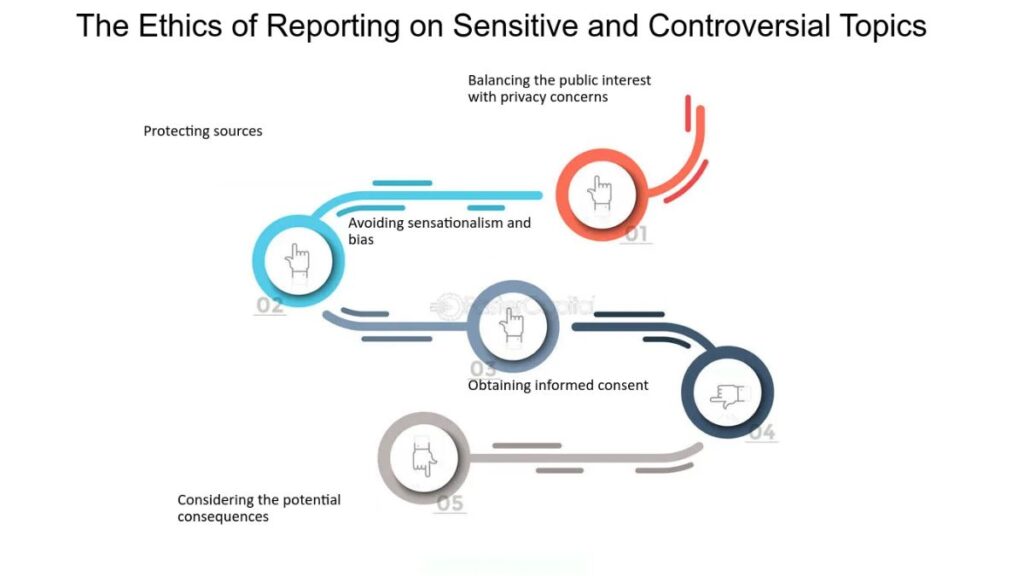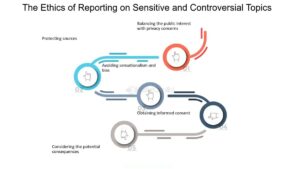The Role of News in Shaping Public Discourse
News media has long held a pivotal role in informing the public, shaping public opinion, and holding institutions accountable. Its influence extends into nearly every aspect of modern society—from politics and economics to culture and public health. However, the news media’s responsibility becomes especially profound when dealing with sensitive and controversial topics such as war, race relations, political corruption, sexual misconduct, and terrorism. How news organizations choose to report these stories often determines not just public perception, but also policy outcomes and social responses. In an era defined by information overload, media fragmentation, and increasing public polarization, the ethical considerations and editorial decisions surrounding controversial news topics have never been more critical.
Editorial Judgment and the Line Between Reporting and Sensationalism
One of the most difficult challenges for news media when covering sensitive issues is striking a balance between informing the public and avoiding sensationalism. Editorial judgment plays a critical role in determining what makes it to air or print, how stories are framed, and what language is used. In cases involving violence, abuse, or tragedy, journalists must weigh the public’s right to know against the potential trauma caused to victims and their families. For instance, during mass shootings or terrorist attacks, the news media often faces criticism for overexposing the names or motives of perpetrators, potentially encouraging copycat incidents. Conversely, failing to report thoroughly on such incidents may result in accusations of cover-ups or bias.
Journalists rely on editorial guidelines and ethical frameworks, such as those developed by organizations like the Society of Professional Journalists (SPJ) or the BBC Editorial Guidelines, to navigate these minefields. These frameworks emphasize principles such as minimizing harm, seeking truth, acting independently, and being accountable and transparent. Still, the subjective nature of “minimizing harm” means different outlets may handle the same story in vastly different ways.
Framing and Language: How Word Choices Influence Perception
The language used in news reports can significantly affect how an audience interprets an issue. This phenomenon, known as “framing,” involves choosing specific terms, headlines, images, and sources that subtly steer readers or viewers toward a particular perspective. In controversial topics like immigration, police violence, or LGBTQ+ rights, the framing can either humanize marginalized communities or portray them as threats or outsiders. For example, referring to people as “illegal immigrants” versus “undocumented migrants” suggests different attitudes toward their legal and moral standing.
News media, whether intentionally or not, can reinforce stereotypes or create divisive narratives through poorly chosen language. Responsible news outlets often conduct style guide reviews to ensure terminology remains respectful, inclusive, and factual. However, not all media operate under the same standards, especially in the age of clickbait headlines and online virality. The pressure to generate web traffic can sometimes override journalistic integrity, leading to overly dramatic or misleading coverage that distorts the underlying issue.
The Influence of Ownership, Politics, and Commercial Interests
While many assume that the news functions independently, the reality is more complex. News outlets are often influenced by their ownership structures, political affiliations, and financial interests. These factors can play a significant role in determining how sensitive issues are portrayed—or whether they are covered at all. For instance, a media company with strong ties to a political party may downplay scandals involving allied figures while exaggerating those linked to opponents. Similarly, corporate sponsors or advertisers might pressure outlets to avoid stories that could damage their reputation or bottom line.
This interplay of commerce and journalism becomes especially dangerous in sensitive topics that require a clear-eyed, unbiased approach. A good example is the coverage of climate change, where certain media outlets have historically downplayed scientific consensus due to pressure from fossil fuel industry advertisers. This not only misleads the public but can also delay urgent policy responses. Independent journalism, nonprofit newsrooms, and public broadcasting services are often better positioned to cover such topics without compromise, but they frequently face funding and sustainability challenges.
Handling Breaking News: The Race Against Time vs. Accuracy
When controversial or tragic events unfold in real time—such as terrorist attacks, natural disasters, or police shootings—the pressure on newsrooms to deliver immediate information is immense. In such situations, the risk of spreading misinformation is high. Early reports may be based on unverified sources, misidentified individuals, or fragmented details. The desire to be first with breaking news often conflicts with the journalistic imperative to be accurate.
In recent years, many media outlets have introduced protocols for verifying sources and issuing corrections rapidly, but the damage from initial false reporting can be difficult to undo. Social media exacerbates the issue, as misleading information often spreads faster than retractions or clarifications. This is why some news organizations now employ dedicated fact-checkers and verification teams, particularly when reporting on fast-moving, high-stakes topics. Nonetheless, the trade-off between speed and accuracy remains one of the most enduring dilemmas in modern journalism.
The Ethics of Visual Content: Images That Shock, Inform, or Exploit?
Photographs and video footage often form the most visceral parts of news reports, especially in cases involving war, death, or human suffering. The decision to publish such images requires a careful ethical evaluation. On one hand, graphic imagery can convey the severity of a crisis in ways that words alone cannot—think of the viral photo of Alan Kurdi, the Syrian boy who drowned while fleeing conflict. Such images can galvanize global attention and spur humanitarian responses. On the other hand, there is a fine line between impactful reporting and exploitation.
Editors must consider consent, cultural sensitivity, and potential audience trauma before deciding to publish graphic content. Some outlets provide content warnings or blur images, while others choose to avoid them entirely. Different audiences also have different tolerances for such content, and cultural norms can influence these expectations. International news organizations reporting on conflicts abroad must be especially mindful of not dehumanizing victims or presenting distant tragedies as mere spectacles.
Audience Polarization and the Echo Chamber Effect
One of the most challenging developments in contemporary news is the increasing polarization of audiences. With the rise of digital platforms and algorithm-driven content feeds, consumers often gravitate toward news sources that align with their preexisting beliefs. This echo chamber effect makes it difficult for individuals to encounter opposing viewpoints, leading to a fragmented public sphere where consensus is hard to achieve—even on matters of fact.
For news organizations, this creates a paradox. While presenting balanced and nuanced coverage is a core journalistic value, doing so may alienate segments of their audience who perceive any deviation from their worldview as bias. This tension is particularly pronounced in the coverage of hot-button issues like gun control, abortion, and racial justice. To counteract this, some outlets have introduced “explainer journalism” sections or public editor roles to clarify editorial decisions and present multiple perspectives on a story. However, regaining public trust in the age of polarization remains an uphill battle.
Legal and Cultural Constraints Around the World
The way news media handles controversial topics also varies significantly across different countries and cultures. In some parts of the world, press freedom is curtailed by authoritarian regimes, making it dangerous or impossible for journalists to report freely on issues like government corruption, human rights abuses, or ethnic violence. In such environments, news media often resort to self-censorship or anonymous reporting, and foreign media may become the primary source of reliable information.
Even in democratic countries, cultural taboos and legal restrictions can influence coverage. For example, in Germany, there are strict laws around displaying Nazi symbols, which affects how certain historical or political stories are presented. In India, reporting on religious tensions requires careful navigation of deeply entrenched communal sensitivities. In such contexts, the responsibility of journalists goes beyond objectivity—they must also be cultural interpreters and bridge-builders.
The Future of Responsible Journalism in a Changing Landscape
As the media landscape continues to evolve with the rise of artificial intelligence, deepfakes, and citizen journalism, the challenges in reporting on sensitive and controversial news are likely to grow. However, so too are the tools available for ethical and responsible journalism. AI can assist in fact-checking, verifying images, and monitoring disinformation. Collaboration between international newsrooms and nonprofit fact-checkers can also help build resilience against media manipulation and political pressure.
At the same time, media literacy must be promoted among the public to help individuals critically evaluate news sources and distinguish credible reporting from propaganda or misinformation. Journalism schools, media outlets, and public institutions all have a role to play in nurturing a more discerning and informed citizenry.
Conclusion: Striving for Integrity in a Complex World
Handling sensitive and controversial topics is one of the most demanding aspects of news reporting. It requires not only technical skill and editorial discipline but also moral courage and empathy. In a world increasingly shaped by crisis, conflict, and complexity, the role of the news media is more vital than ever. When done right, responsible journalism can illuminate truth, challenge power, and inspire action. When mishandled, it can deepen divisions, spread harm, and erode public trust. As news consumers, it is our responsibility to hold media accountable, support high-quality journalism, and seek out diverse perspectives. As for the journalists, their calling remains unchanged: to inform, to question, and above all, to do no harm.



